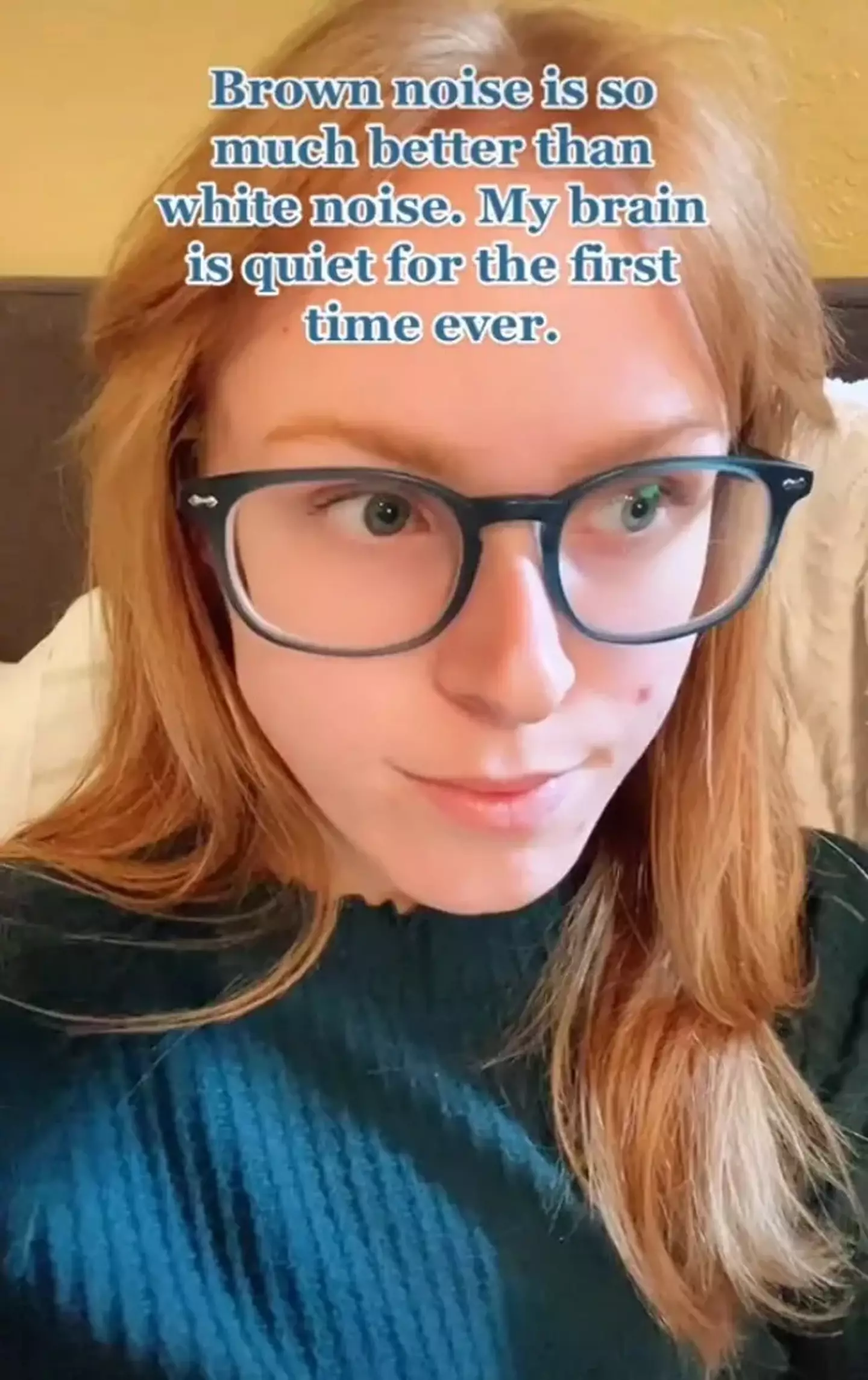
People have been ditching white noise in favour of brown noise after discovering it on TikTok.
You may've heard of white noise or even experienced it yourself if you're old enough to have had a TV which relied on a dodgy aerial you had to hand manoeuvre when you tried to switch channels.
Despite how frustrating white noise can be in that specific situation, it's actually frequently adopted as a noise to play in the background to help with going to sleep or concentration levels.
Advert
However, there's another noise - 'brown noise' - which you may not be quite as familiar with. Check it out below:
Who brown noise is benefitting
The ADHD community on TikTok have been finding brown noise incredibly helpful in keeping their minds calm.
Advert
Captioned 'Is this how most people’s brains feel all the time??!' one user's video shows her listening to the low-sounding roaring noise with the added label: "Brown noise is so much better than white noise. My brain is quiet for the first time ever."
And there's actually a whole rainbow of noises out there, not just white and brown including pink noise and blue noise, too.
But what does 'brown noise' actually do and how does it differ to white noise?

How brown noise is different
Brown noise isn't dissimilar to white noise, but is much deeper – it has the sound of a low roar like a strong waterfall.
Advert
This is because, according to Live Science, unlike white noise – where the spectral density (power per Hertz) is even throughout all frequencies – brown noise has a spectral density that's inversely proportional to its frequency squared. Essentially, this means that its power significantly decreases as its frequency increases.
How did it get its name?
Brown noise doesn't get its moniker from the colour; it is in fact named after botanist Robert Brown, who discovered Brownian motion (random particle motion) in the 1800s. It's also known as Brownian noise is because its change in sound signal from one moment to the next is random.
Brown noise is also sometimes called red noise because it's analogous to red light, which has a low frequency.

Online reaction to brown noise
Comments on the TikTok user's videos were in agreement that brown noise is better than white noise.
Advert
One user wrote: "This is why I love the sound of fans and air conditioning."
Another added: "Oh, oh I actually feel??? Comfortable?"
In another TikTok video, the user wrote: "If you're wondering, brown noise ... cured my ADHD. Why? I don't know.
"What I do know is that anytime I put it on I'm sucked into a vortex of hyper focus and the world just makes sense.
Advert
"Have I cracked the code? Maybe."
Topics: Health, Mental Health, Social Media, TikTok, Science
